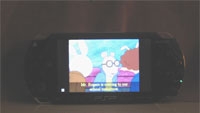WGBH wins $600K grant to develop captioning solutions for mobile media

U.S. public broadcaster WGBH has announced plans to develop technical solutions for delivering captioned content to mobile devices for the deaf and hard of hearing using a $600,000 grant it recently won from the Department of Education’s National Institute on Disability and Rehabilitation Research.
During the next three years, WGBH, through its Carl and Ruth Shapiro Family National Center for Accessible Media (NCAM), will research ways of embedding captioning solutions within handheld devices, as well as strategies for captioning media that is streamed directly to mobile devices via wireless networks, multichannel DTV distribution or downloaded to desktop computers and then transferred to mobile devices.
In an interview with Mobile TV Update, Larry Goldberg, director of media access for WGBH, said his organization would examine all existing technologies for producing and distributing content through mobile devices to determine how the technical requirements needed to transmit captions could be implemented. Without such requirements, an estimated 28 million Americans who are deaf and hard of hearing are unable to fully benefit from the increasing amount of content being delivered to mobile devices.
“We will be looking at the underlying infrastructure to see what it would take to integrate closed-captioned data,” said Goldberg, whose organization is in the process of examining all the major technologies, from MediaFLO to DVB-H to the ATSC’s proposed ATSC-M/H standard. The research will also extend to the device level: “We need to start prying open the boxes and taking an actual look at the data formats, and see what way data can be sent and then turned on and off.”
WGBH has already started working on the project. Prior to applying for the grant, it conducted some experiments using videos with open captions laid across on a PSP, a Creative Zen Video Player and an iPod. Among other concerns, the broadcaster wanted to ensure that the captions were actually readable on small screens.
The timing for the research seems right. From the launch of Verizon Wireless’s V CAST mobile TV service, to the one-millionth sales mark of the iPhone, it seems video on mobile is truly catching on with Americans. Goldberg said it was essential for WGBH to stay ahead of the curve: “If we don’t get started now, when video really and truly does become pervasive on mobile devices, it’ll be too late to find ways of getting captions in there.”
Technology partners AOL, Hewlett-Packard, the Open Media Network and Samsung Electronics will provide development platforms for the research. WGBH, along with content partners MacNeil/Lehrer Productions and Hewlett-Packard, will offer video content for user testing that will be conducted among those who are deaf or hard of hearing using prototype devices.
WGBH is well known for its efforts to provide services for hearing and visually impaired viewers. In the 1970s, it invented captioning for deaf and hard-of-hearing TV viewers, and later, the Descriptive Video Service (DVS), which provides an audio narration of a program’s visual elements for the blind and visually impaired. Earlier this year, it developed a free component for Flash, CC for Flash, which can be authored into any SWF file for playback in Adobe Flash Player.
Get the TV Tech Newsletter
The professional video industry's #1 source for news, trends and product and tech information. Sign up below.
For more information, visit www.wgbh.org.
